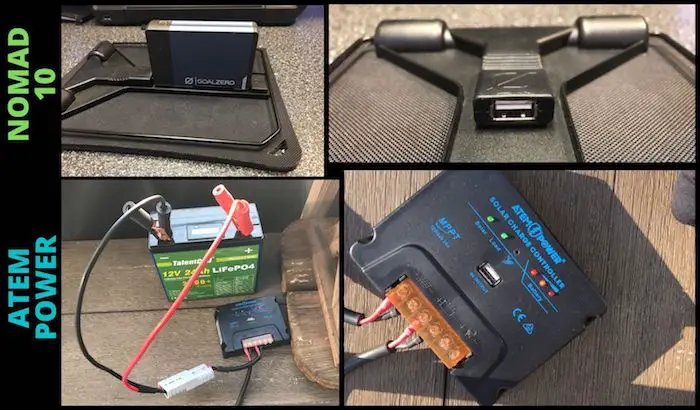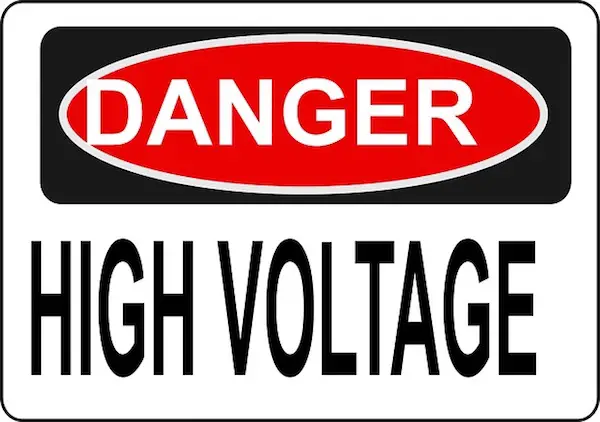Charge controllers are used to regulate the electric current added to or drawn from a battery. In essence, when solar panels generate electricity, the charge controller communicates between the batteries and solar panels in order to securely charge the battery.
A solar panel simply generates energy depending on the weather outside, which can cause its output to change several times per day. Plus, they cannot monitor the status of the battery it’s charging.
As a general rule, you can’t use a solar panel without a charge controller because it risks overvoltage, reverse current flow, and overcharging a battery. A charge controller regulates the solar panel’s output to properly charge and stop charging a battery.
Below, I’ll discuss when it is appropriate to use a charge controller in more detail.
Can you use solar panels without a charge controller?

It’s best practice to always use a charge controller with solar panels. Batteries need consistent regulated power to charge, of which solar panels cannot do themselves without a charge controller. However, there are a few instances where using charge controllers with solar panels isn’t necessary.
Two typical occasions where you can use a solar panel without a charge controller are the following:
1. Trickle charging a battery with a small solar panel
In some cases, using a very small solar panel to trickle charge a big battery may be okay to do without a charge controller. However, this setup can risk overcharging the battery.
Many people use simple 5W panels when partially charging larger batteries for maintenance or storage without a charge controller. However, this scenario is unlikely to present itself for those living an off-grid lifestyle.
The general rule is that if the panel emits two watts or less for every 50 battery amp-hours, then a charge controller is unnecessary.
is that if the panel emits two watts or less for every 50 battery amp-hours, then a charge controller is unnecessary.
2. Using a solar panel’s USB ports
Several portable solar panels come with USB ports on them. When using these types of panels, it’s okay to connect devices directly via USB. This is because the panel has an integrated smart IC chip that regulates the voltage to your devices.
Below is an image of my Goal Zero Nomad 10 panel and Atem Power charge controller. The Nomad 10 uses one USB output for direct device charging and doesn’t require a charge controller.
The Atem Power controller also has a USB port that works in a similar fashion as the Nomad 10, however, its main function is charging batteries by acting as an intermediary between the solar panel and battery.

Another example of a solar panel with an IC chip is my Elecaenta 120W solar panel. It has two USB ports (one USB-A and one USB-C PD) that are controlled by a smart IC chip so you can safely charge devices from the panel if desired.
Protective measures within charge controllers

Other than the previously mentioned scenarios, a charge controller should always be used when charging a battery with solar panels.
You can overcharge a battery with a solar panel if they are directly connected to each other. As a battery reaches 100% capacity, the solar panel will continue to output power to the battery, potentially causing the battery to overheat, reduce its working lifespan (cycle life), and/or malfunction entirely.
Charge controllers are used to prevent this from happening since they can reduce the voltage from the solar panel to the battery .
.
The core benefits of using a charge controller include the following:
- Prevents overcharging: Without a charge controller in place, the solar panel’s full output will continue to run to the battery even after it has reached its charge capacity. With a controller, the solar output is converted to a healthy volt/amp level that prevents overcharging the battery.
- Prevents overvoltage: Solar panels tend to produce a higher voltage than a battery can use to charge with. A charge controller prevents the excess voltage from damaging the battery.
- Prevents reverse current flow: When the panels aren’t producing power at night, the battery can lose power by transmitting energy through the solar panel. The charge controller stops this by opening the circuit
 that connects the panel to the battery.
that connects the panel to the battery. - Prevents overdischarge: When the charge controller detects that the battery has depleted its store of energy, it will automatically disconnect the battery from its load
 . A deep discharge state can negatively impact a battery’s ability to hold a charge and shorten battery lifespan.
. A deep discharge state can negatively impact a battery’s ability to hold a charge and shorten battery lifespan.
Importance of using charge controllers to charge batteries
Solar panels produce direct current (DC), meaning that the electricity generated from the photovoltaic cells flows in only one direction. To effectively charge a battery, the direct current from the solar panel must exceed the amount stored in the battery when it’s charging.
As most 12V batteries will have a storage capacity of about 14.2V, once this threshold has been reached, the charge controller automatically reduces the flow of direct current from the solar panels to prevent overcharging (also referred to as “float charging”).
When a solar panel is not producing enough power to sufficiently charge a battery, it’s important that the charge controller cuts off the solar panel’s output to protect the battery.
Even though the power produced by the solar panel isn’t enough to charge the battery, its continued flow to the battery without a controller can cause the battery to heat up without charging, and this prolonged exposure to high temperatures can expedite battery degradation.
Can I connect a solar panel directly to an inverter?
In general, a solar panel cannot connect directly to an inverter. Since a solar panel’s output varies during the day, this causes an inverter to receive an inconsistent power supply and become faulty. A charge controller is needed to successfully regulate the voltage from the panel to the inverter.
This applies to both small DIY setups as well as rooftop solar arrays. Microinverters, hybrid inverters, and string inverters are all mainly used for rooftop solar arrays. These require charge controllers (mainly MPPTs) to convert DC to AC power from the solar panels.
The video below highlights why a solar charge controller should be used with both batteries and inverters.
Conclusion
To sum everything up, a charge controller prevents a battery from getting damaged by solar panels. A solar panel with USB ports doesn’t need a charge controller since it typically uses an IC chip to regulate the voltage to your devices.
A small solar panel can be used to trickle charge a large battery without a charge controller, but this may require you to consistently monitor your system due to overcharging risks.
Lastly, using solar panels to directly power inverters is not recommended without the use of a charge controller because the solar output is not regulated.
